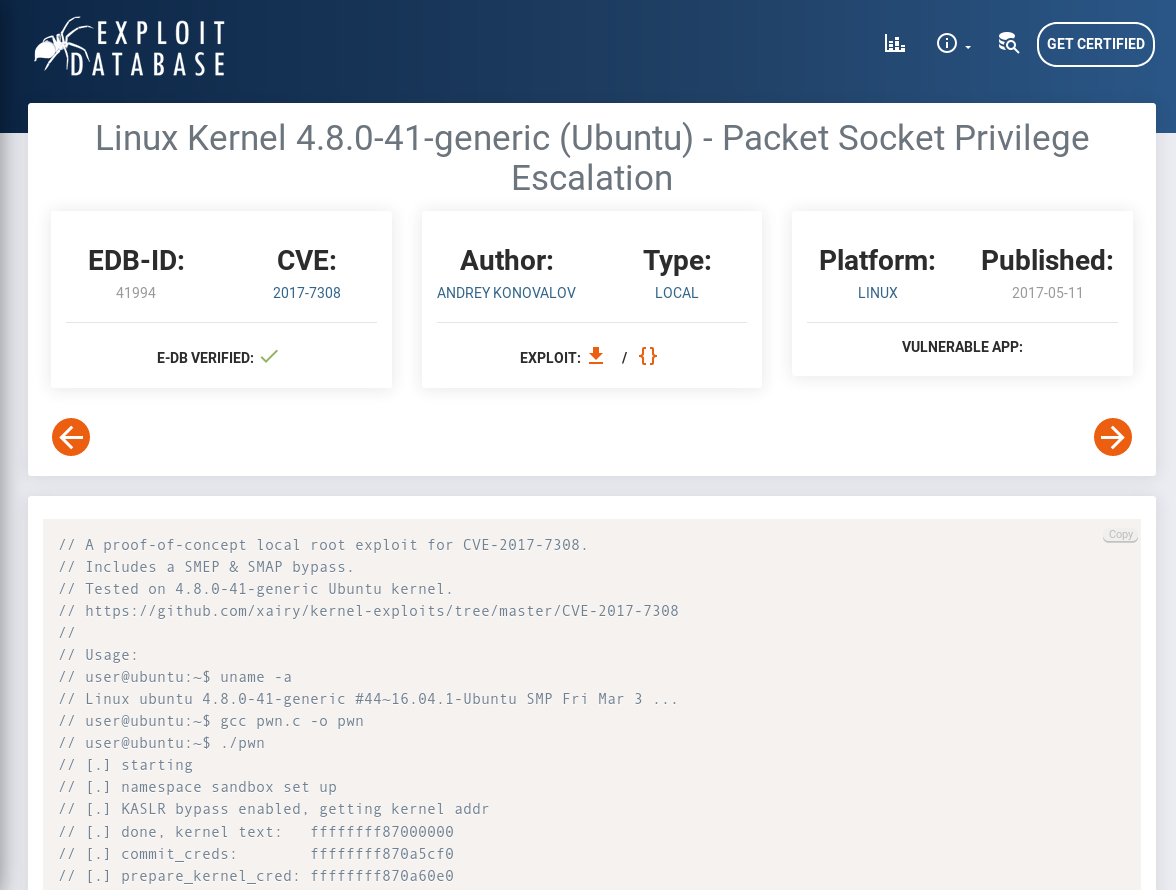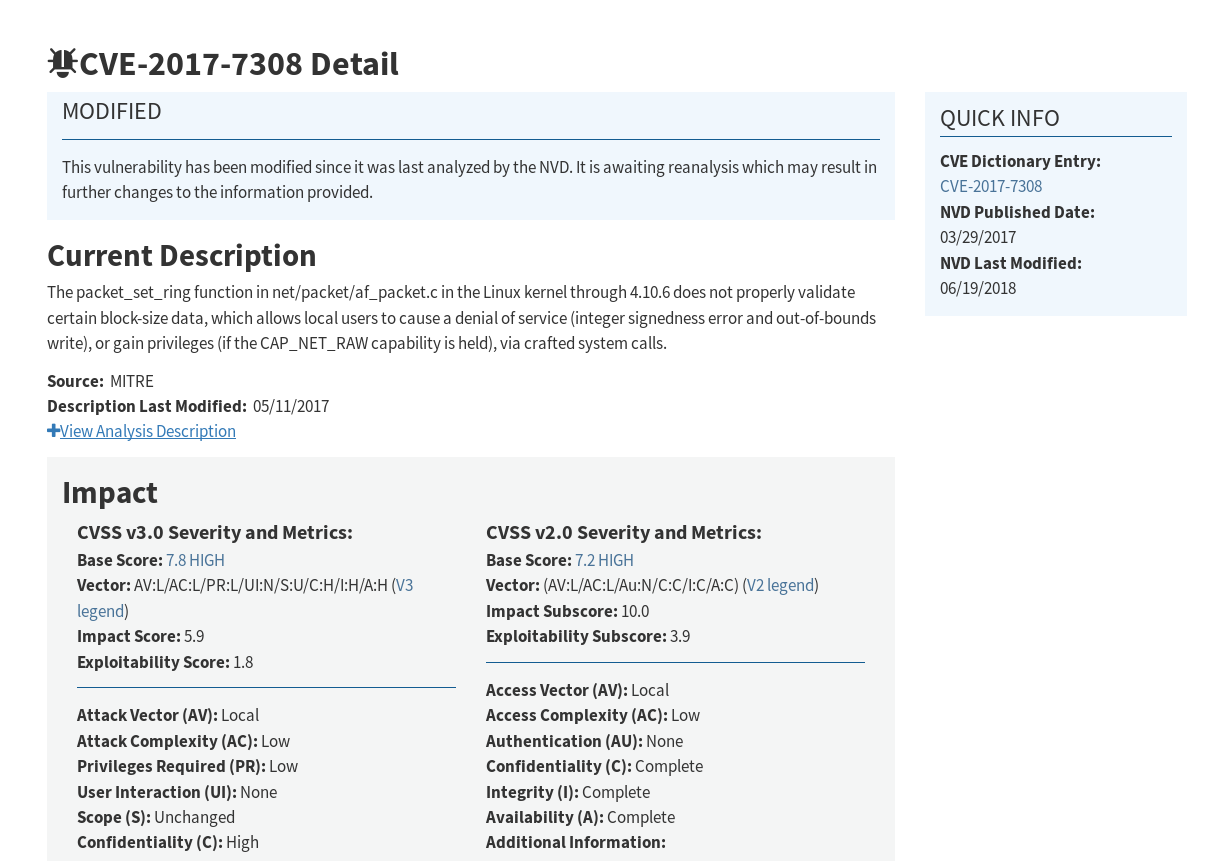Exploitation Research¶
Initial Access¶
What is initial access?
- First hook into a system. The method to gain first foothold into a network.
What is the most common method for gaining initial access?
- Spear phishing combined with malicious attachments. ~95% of initial access achieved this way.
- We do not teach spear phishing paired with malicious files in this class, but it is important to understand that this is the still the most common method.
What are some other techniques to gain initial access?
- Spear Phishing
- Stolen Credentials
- Password Spraying
- Password/Credential Reuse
- Watering Hole Attacks
- Targets of Opportunity
- Public Service Exploitation
- Webserver Exploitation
- Network Binary Exploitation
Exploitation Research¶
Outcome:
- Understand how to conduct vulnerability and exploit pairing/research based on collected technical information
Introduction
Information collected during Reconnaissance provides an initial picture of an network and attack surface. Technical information, such as OS types and software, can be used to pair with possible exploits if vulnerabilities can be identified or developed.
The goal of exploit research is determine initial access vectors to be utilized to gain a foothold into the network, perform privilege escelation, remote C2, and lateral movement.
Discussion:
You should have been able identify a system running Proftp during the Reconnaissance Activity
- What was the kernel version?
4.8.0-41 generic kernel
What can we do with this information and how can we leverage it?
What resources could be use to identify possible vulnerabilities?
Databases (such as exploit-db, rapid7, cvedetails), online articles, etc.
If a vulnerability is found what information are we most interested in?
Depends on what our objectives are. If a vulnerability is a DoS but our objective is to gain access than the vulnerability is not something we would research further.
If vulnerabilities can not be found what do we do?
Develop new exploit: see if there are possible code flaws that we could leverage. Maybe develop a fuzzer or buffer overflow, this requires advanced knowledge and resources.
Exploit-DB and CVE's are just a few places that one can use when researching vulnerabilities and exploits. Additional areas to research include:
- Vulnerability-labs
- Security firms such as Symantec Threat db and Rapid7 Threat db
- Security blogs
- Git Repositories
- Vendor sites such as Cisco Talos Group and Microsoft Security Intelligence
- Organizational tools (nation state actors might have already developed zero-days or developed tools)
After pairing and exploit to a vulnerability attackers will tailor those exploits with additional code in order to provide additional capabilities. Some of these include:
- Remote access (call backs, bind sockets, etc)
- Automation (priv esc, self propagation)
- Encrypt communication flows
-
Additional binaries for additional functionality
- such as tools that would not be native on system like socat or namp
-
Encrypt hard drives (Ransomware)
Even though pairing is completed and code is tailored what would happen next?
- Accruing the type of systems and softwares that you are attempting to exploit.
- Code testing against vulnerabilities in an sandbox environment to ensure functionality and identify any issues that could occur.
- Develop tactics, techniques, and procedures (TTPs) on the usage of the current exploit (we could now call it a tool).
Important
It is imperative to conduct testing before attempting delivery of exploits
Proven testing provides:
- Improved breakout time from initial access
- Reduced risk of detection
- Faster lateral movement
DEMO: Vulnerability research¶
Note
Research Ubuntu system kernel
Start with the 4.8.0-41 kernel
- Simple Google search:
ubuntu 4.8.0-41 kernel vulnerabilitiesshould lead to exploit-db
EDB-IB: ID for the exploit inside DB
Author: Name of who developed the exploit
- You many also click to see all contribuations the author has
E-DB Verified: Provided exploit tested and works
Exploit: May download or view raw code of the exploit
Bottom plane: Shows the exploit code
CVE: Links this exploit to National Vulnerability Database (NVD)
- Click this to show the NVD
Note
The NVD site will give use a description of the vulnerability, impacts, references, versions, and history of the vulnerability.
-
Type of exploit.
local priv esc
-
What is the exploit taking advantage of?
(SMEP) Supervisor Mode Access Prevention - protection in the kernel to stop MALWARE from using user-space data
(SMAP) Supervisor Mode Execution Prevention - protection to prevent supervisor mode from unintentionally executing user-space code.


